The OAR ORTA UxSRTO is no longer operating.
For further information, please visit The Office of Marine and Aviation Operations (OMAO) Uncrewed Systems Program webpage.
UxSRTO News
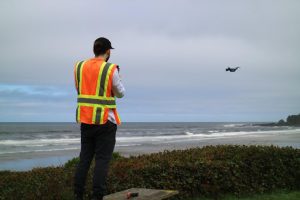
NOAA Announces $6.4 Million in Funding for Innovative Uncrewed Systems Projects
Uncrewed aircraft and marine systems have great potential to enhance and expand the ways that NOAA meets its mission to understand and predict changes in climate, weather, ocean and coasts. NOAA’s Uncrewed Systems Operations Center (UxSOC) and Uncrewed Systems Research Transition Office (UxSRTO) are partnering to support and facilitate the research, development and transition to operations of uncrewed systems (UxS) across the agency. To that end, the two NOAA offices are funding 12 innovative projects, with a focus on
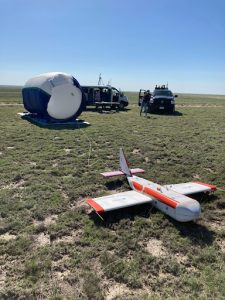

High-altitude Operational Returning Unmanned System (HORUS) Acquires Measurements at Altitude of 90,000 ft (MSL)
Principal Investigator: Dr. Colm Sweeney and Co-Principal Investigator: Dr. Bianca Baier (GML) The NOAA Global Monitoring Laboratory (GML) AirCore has revolutionized high-altitude trace gas sampling to ~30 km (> 98% of atmosphere) in the past decade. These trace gas profiles provide valuable information for satellite validation and understanding of atmospheric composition in the lower-middle stratosphere that are unreachable by most aircraft. The AirCore — a 100-m long coiled tube — is a passive whole-air sampling


NOAA Model Incorporates sUAS Data for First Time to Improve Hurricane Forecasts
For over 30 years, NOAA has utilized reconnaissance aircraft to obtain measurements within tropical cyclones (TCs), including hurricanes in the Atlantic and Gulf of Mexico. These platforms have proven extremely valuable for furthering TC research and improving forecasts. Any data that improves tropical cyclone forecasts in turn improves tropical cyclone watches, warnings, and relevant evacuation information.
The recent advent of small Uncrewed Aircraft Systems (sUAS) are being evaluated for their potential to enhance the reconnaissance data gathered by NOAA by operating in hazardous regions where conventional aircraft cannot fly.
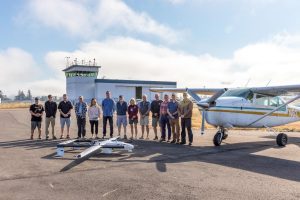

NOAA Completes FVR-55 Operations in Marine Stratocumulus Clouds to Measure Atmospheric Aerosol Properties needed to Improve Climate Model Simulations
Between August 8th and 18th, 2022, the NOAA Pacific Marine Environmental Laboratory (PMEL) and the University of Washington Cooperative Institute for Climate, Ocean, and Ecosystem Studies (CICOES) used the L3Harris Fixed Wing Vertical Takeoff and Landing Rotator (FVR-55) uncrewed aerial system (UAS) to measure aerosol and cloud vertical profiles with the NOAA Clear Sky and Cloudy Sky scientific payloads (descriptions provided below). The sensors in the payloads measure aerosol properties relevant to aerosol direct radiative forcing and aerosol – cloud interactions. The mission was supported, in part, by NOAA’s Earth Radiation Budget (ERB) program that was initiated to investigate natural and human activities that might alter the reflectivity of marine boundary clouds. The UAS measurements reported here will provide critical information on the processes that lead to the brightening of marine clouds with a potential cooling of the Earth’s surface.
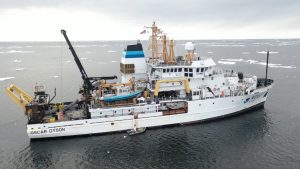

NOAA Alaska Fisheries Science Center’s Ice Seal Research in the Eastern Bering Sea Aboard the NOAA Ship Oscar Dyson
NOAA’s Alaska Fisheries Science Center’s (AFSC) studies Alaska’s marine ecosystems to ensure the sustainable use and conservation of living marine resources in federal waters. A recent study done by NOAA scientists focuses on surveying ice seals, with the primary goal of deploying non-invasive, low-disturbance methods for monitoring the body condition of Arctic seals as an indicator of population health and productivity. This work complements and expands the capabilities of NOAA’s existing large-area photographic surveys to monitor Arctic seal populations and their responses to a rapidly changing environment. The methods and techniques developed throughout this project will greatly enhance NOAA Fisheries capabilities to assess the status and trends of bearded, ringed, spotted, ribbon, and harbor seals in Alaska, as well as meet the agency’s responsibilities under the Marine Mammal Protection Act (MMPA) and Endangered Species Act (ESA). From April 8th-25th 2022, researchers with the The Polar Ecosystems Program (PEP) embarked on the NOAA AFSC ice seal research expedition aboard the NOAA Ship Oscar Dyson in the eastern Bering Sea.
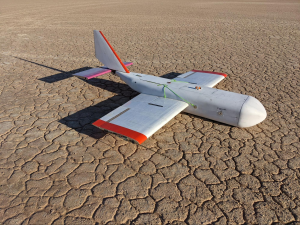

HORUS is Approved to Fly in the National Airspace in Northeastern Colorado
Uncrewed aerial systems (UAS) have long been heralded for their unique potential to sample the upper atmosphere at much lower costs and in environments unreachable by most aircraft. However, under normal flight rules, NOAA UAS can only fly up to 1,200 feet above ground level in the national airspace.
NOAA Global Monitoring Laboratory has recently obtained approval from the Federal Aviation Administration (FAA) to fly the High-altitude Operational Returning Unmanned System (HORUS) up to 90,000 ft above mean sea level (MSL) in the national airspace in northeastern Colorado.
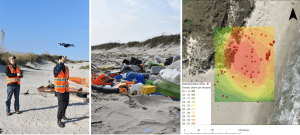

Marine Debris Detection with UAS, Machine Learning, and Polarimetric Imaging
Marine debris, human-made material that is discarded or abandoned into the marine environment, is a pervasive problem plaguing shorelines around the world. Marine debris poses serious threats to wildlife, degrades coastal and marine environments, and can negatively impact the Blue Economy (e.g., tourism, shipping, and fisheries). NOAA’s Marine Debris Program (MDP), as the U.S. Federal lead for assessment, prevention, and removal of debris, works with partners across the Nation to conduct debris shoreline surveys to identify debris accumulations, locations, and sources as part of the Marine Debris Monitoring and Assessment Project (MDMAP). Data from these surveys have been used to assess spatial and temporal trends in shoreline debris, inform behavior change campaigns focusing on specific items and assess the effectiveness of legislation targeting specific items. In this project, NOAA’s National Centers for Coastal Ocean Science (NCCOS), NOAA’s MDP, and Oregon State University (OSU) partnered to investigate three emerging technologies with the potential to transform how marine debris shoreline surveys are conducted: uncrewed aircraft systems (UxS), machine learning, and polarimetric imaging (PI) cameras.
This innovative technology and corresponding operations were funded and supported by the OAR Uncrewed Systems Research Transition Office (UxSRTO).
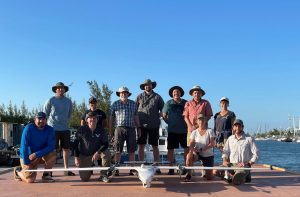

NOAA Completes FVR-55 Shipboard Launch/Recovery Operations to Measure Atmospheric Aerosols and Fluxes needed to Improve Climate Model Simulations
During the month of March 2022, the NOAA Pacific Marine Environmental Laboratory (PMEL) and Physical Sciences (PSL) Laboratories used a newly developed uncrewed aircraft system (UAS) to better understand the chemical and physical characteristics of the atmosphere. The suite of sensors used in these demonstrations will improve climate and weather models by providing unique information about the atmosphere.
In partnership with L3Harris Technologies, an American technology company, NOAA has used the newly developed FVR-55 (Fixed Wing Vertical Takeoff and Landing Rotator) UAS to conduct shipboard launch and recovery operations for collecting atmospheric data with the NOAA “Clear Sky,” “Cloudy Sky,” and “miniFlux'' scientific payloads. Development of this innovative technology was initially funded through a NOAA Phase I Small Business Innovation Research (SBIR) award in 2016, followed by a Phase II SBIR award and follow-on contract for the continued development of the UAS. Continued development and operations were funded and logistically supported by both the OAR Uncrewed Systems Research Transition Office (UxSRTO) and the OMAO UxS Operations Center (UxSOC). Participants from PMEL, PSL, UxSRTO, UxSOC, and L3Harris performed 11 fully autonomous ship-launching and landing flight operations (14.9 hours of total flight time) off Key West, FL to test and demonstrate the scientific payloads.
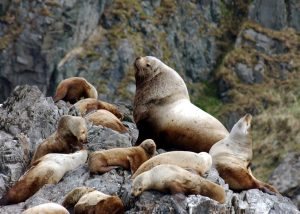

Use of Artificial Intelligence (AI) to Monitor Steller Sea Lion Populations
Every year, Alaska Fisheries Science Center’s Marine Mammal Laboratory of NOAA Fisheries uses crewed and uncrewed systems to conduct aerial surveys of known Steller sea lion sites across Alaska. These surveys are essential to monitoring the endangered western population of Steller sea lions in Alaska. While the population as a whole has begun to show signs of recovery, one region in the westernmost part of the population range has declined 94% in the last 40 years (showing no signs of recovery), and rookeries – sites where sea lions mate, give birth, and rest – have begun to disappear. In the Gulf of Alaska, anomalous warm water events beginning in 2014 are becoming more commonplace and are likely causing the observed declines in the area – an area which was previously showing signs of sea lion population recovery and began to increase in 2002.
